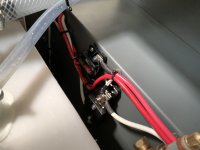ITTOG
Well-known member
Yeah not sure in foam. I would be afraid putting epoxy in it may not work. I would be afraid when trying to put the screw in the epoxy it would just twist the epoxy and release it from the foam.The screws will go into the panel material of the Camp-X, the foam core panels. Existing screws that attach the fan to the foam core on the inside of the camper are loose, so when I remove the existing fan, I know there will be very little for the new screws to bite into when I install the new fan into the Camp-X foam core panels. I'm curious if I should fill the old screw holes with epoxy prior to screwing the new screws into the foam core panels on the interior to attach the new fan.


